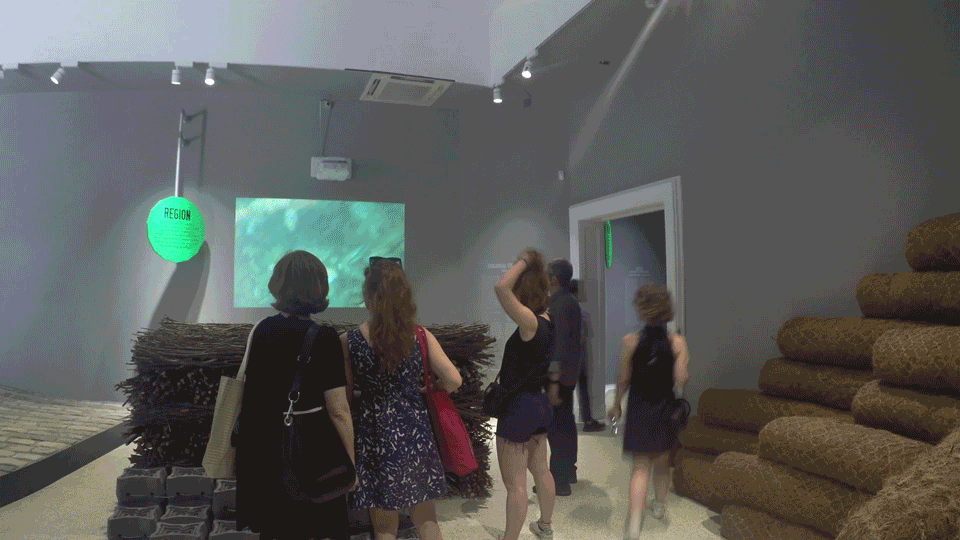“In addition to contiguity of space, what is of primary importance to a region is that there is a there. Every region can be seen as a type of ecology—an environment (a contiguous geographic zone), the subjects that animate it (whether these are animals and plants, specific religious groups, the resources that lie beneath the ground, or the strata of the inanimate), and the relation between these two.”
—Imre Szeman / On the Politics of Region / for E-Flux’s “Dimensions of Citizenship“, a collaboration between the United States Pavilion at the 2018 Venice Architecture Biennale and e-flux Architecture
This week marks the closing of 2018 Venice Architecture Biennale, and the last chance to see SCAPE’s Ecological Citizens installation as part of the US Pavilion’s Dimensions of Citizenship, on view until November 25th.
Dimensions of Citizenship was commissioned by the School of the Art Institute of Chicago and The University of Chicago, and considers how citizenship is constructed and contested in the built environment across seven different scales. SCAPE’s scale – the region – demonstrates that landscape architecture can be a critical tool for re-envisioning the response of citizens to climate change. Ecological Citizens gives agency to citizens (human and non-human alike) of the region—an area that does not have fixed political boundaries, but rather assemblages of ecosystems, interspecies entanglements.
Taking the Venetian Lagoon as a globally significant case study of a tidal region under ecological threat, the exhibition features intertidal architectures, including wood fascines, Econcrete® micro-tide pool units, and biodegradable coir logs that fight erosion, as well as video content about their use by regional citizens. Core to the mission of the Ecological Citizens is the re-deployment of the fascines back into the Venetian Lagoon, which will take place after the exhibition closes next week. SCAPE will be re-deploying the fascines back into the Venetian lagoon, as part of a larger, ongoing salt marsh creation and public access project in collaboration with scientists from the Università di Padova. These “ugly” ecosystem architectures will ultimately serve to help regenerate biodiverse marshlands and create a scaffolding for the shellfish and critters, endangered wading birds, muck and mud, to persist in the larger landscape outside the exhibition galleries.
Read more about Ecological Citizens here.

